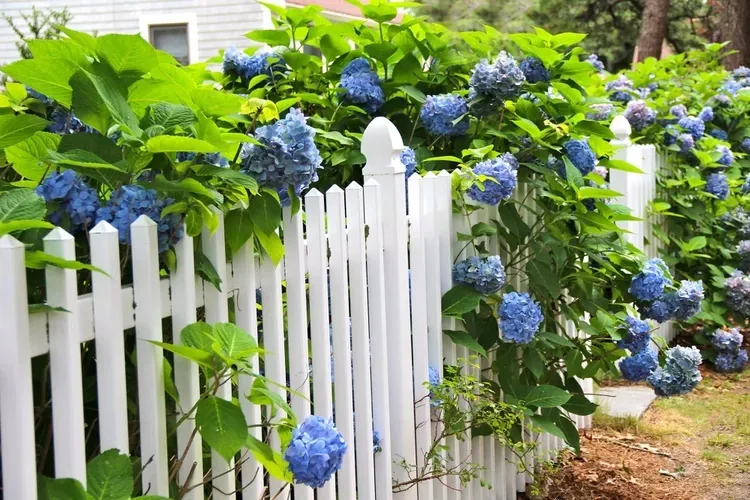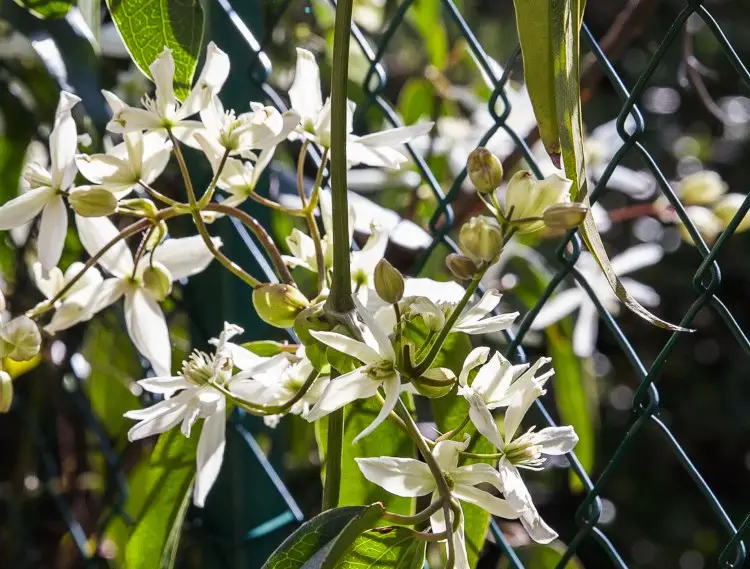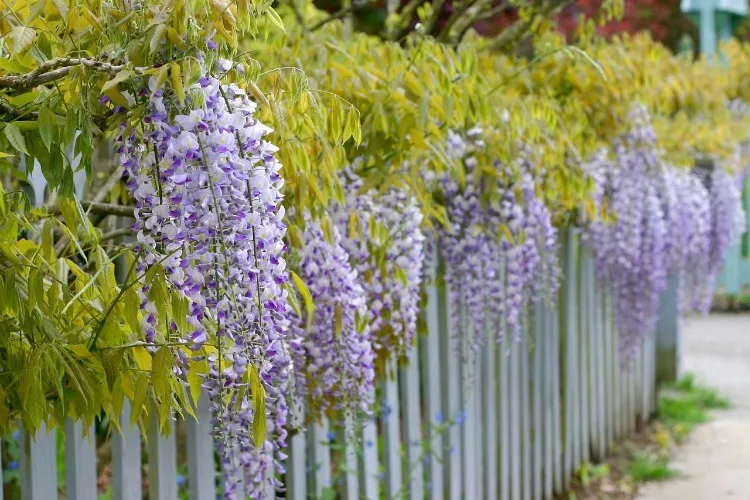Whether as an additional privacy screen or simply for color accents: there are many reasons why you would like to green your fence. Choosing the right plant plays a crucial role in the end result. The next climbing plants for fence are hardy and fast growing.
Which climbing plants for which fence?
There are many fast-growing climbing plants. However, when choosing the right type of plant, you should make sure that it does not damage the fence and that it is not invasive. Strong-growing plants such as bamboo can quickly spread to the neighbor’s garden and should therefore not be used to plant the garden fence. The material of the fence also plays a decisive role in the choice:
- For plastic fence: Strong-growing climbing plants quickly provide privacy, but they can store moisture. So the fence always stays wet. Sensitive materials such as wood can become moldy and damaged. Therefore, climbing hydrangeas and clematis are better suited for planting on metal or plastic fences.
- For wooden fence There are annual plants such as morning glory or nasturtium (perennial in principle, but annual in this country). They don’t have as strong a hold as perennial climbing plants and cannot damage the wood.
- For metal fences (made of aluminium) practically all plants are suitable. The material is extremely robust and the plants find support.
Climbing plants for fence: climbing hydrangeas

Hydrangeas are our favorite climbing plants for fences. While they are fast growing, they take 1-2 years to properly grow onto the fence. The climbing hydrangea does exactly what its name suggests: it climbs. And fast. And incidentally covers fences, trellises and the like with countless brightly colored flowers.
The privacy screen in summer is excellent: the plant has a dense growth, its large leaves cover the fence perfectly. In addition, the climbing hydrangea is very adaptable and can thrive just as well in full sun as in semi-shade. It is a heavy feeder, which means regular fertilization is an absolute must.

The floriferous perennial forms adhesive roots, which should then be tied to the fence. This is how the plant is trained and finds a much easier hold on the fence.
Perhaps the only downside to the climbing hydrangea is that it is not an evergreen. It sheds its leaves in late autumn and does not form new foliage until the following spring.
Evergreen plants on the fence: clematis as a privacy screen

Evergreen clematis is a fast-growing plant that will cover the wooden fence in a year. Its white flowers exude a strong fragrance and its bronze to dark green colored leaves are a real eye-catcher all year round.
Incidentally, climbing roses are perfect plant partners for clematis. The two climbing plants have similar requirements in terms of soil and location.
Wisteria for the garden fence

The wisteria is a hardy plant that, if properly trained, is well suited for planting on the garden fence. Wisteria is a fast-growing plant that fills any gap and spreads quickly. So you can use it to decorate the fence facing the street (as long as the local authorities allow it). For a fence on the border with the neighbors, it is better to choose another plant.
American climbing trumpet shields from prying eyes

The American trumpet vine is an extremely hardy and adaptable plant. Sun, shade, heat and frost: the climbing trumpet from North America defies everything. But beware – the plant spreads quickly and must be cut regularly. The American trumpet vine is also a fast tree climber and can attach itself to nearby trees. The Chinese variety is therefore more suitable for the allotment garden, because it grows relatively more slowly and you can spread it
Climbing plants for fence: roses

Climbing roses are a real eye-catcher. However, they belong to the adhesive root climbers and have a comparatively large weight. Therefore they need climbing help. Climbing roses can also be trained horizontally, so that the shoots cover the entire fence. Young plants need regular watering so that they can develop well.